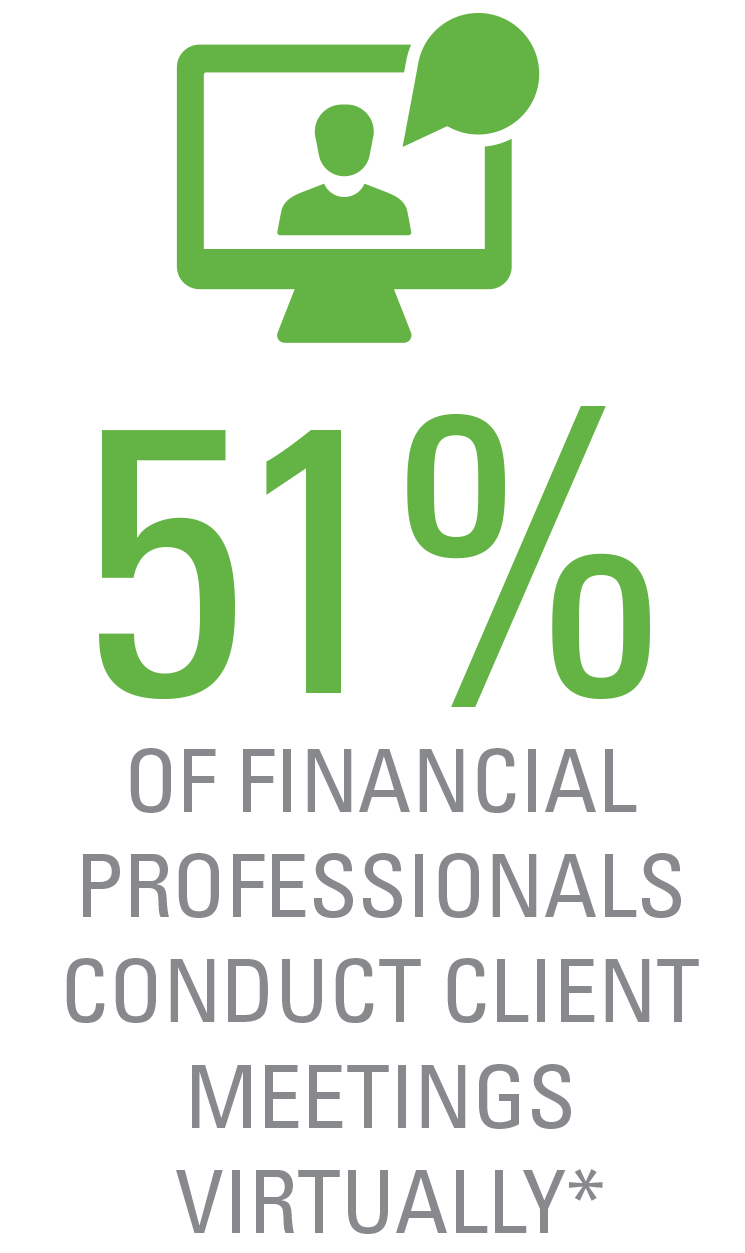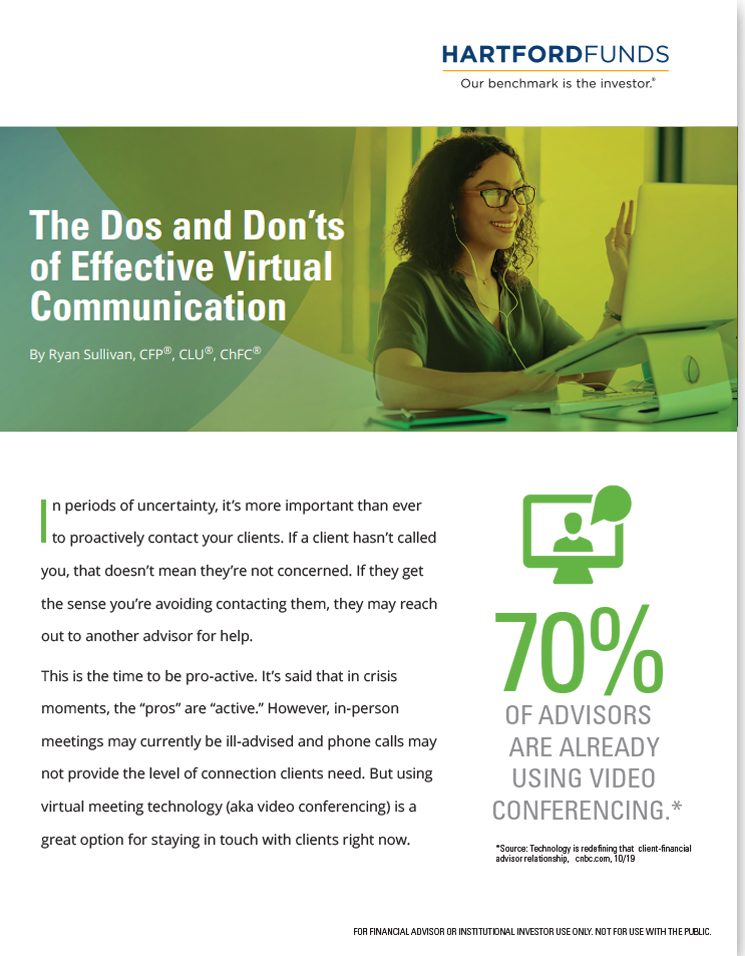
*How Advisors Are Using Tech Now: Survey, thinkadvisor.com, 2/22
In periods of uncertainty, it’s more important than ever to proactively contact your clients. If a client hasn’t called you, that doesn’t mean they’re not concerned. If they get the sense you’re avoiding contacting them, they may reach out to another financial professional for help. This is the time to be pro-active. It’s said that in crisis moments, the “pros” are “active.” However, in-person meetings aren't always possible and phone calls may not provide the level of connection clients need. But using virtual meeting technology (aka video conferencing) is a great option for staying in touch with clients.
Connect with Clients Anywhere, Anytime
If you’ve been reluctant to try online client meetings, now may be the time to jump in—and quickly. Think some clients may be hesitant to try it? Given that anxious investors need informed insights, you may be surprised at how many will be open to an online meeting. If nothing else, offering an online session shows you’re being proactive about communication. Plus, you’ll be keeping up with your competition—51% of financial professionals conduct meetings virtually.*
Following are some tips on how to conduct an effective virtual meeting while avoiding the most common mistakes. These tips are written to primarily cover one-to-one client meetings, but most would apply for one-to-many webinars, as well. (This is also a great time to be reaching out to groups of prospects and clients.) As with any online tools, check with your firm first for any compliance restrictions or system requirements.








